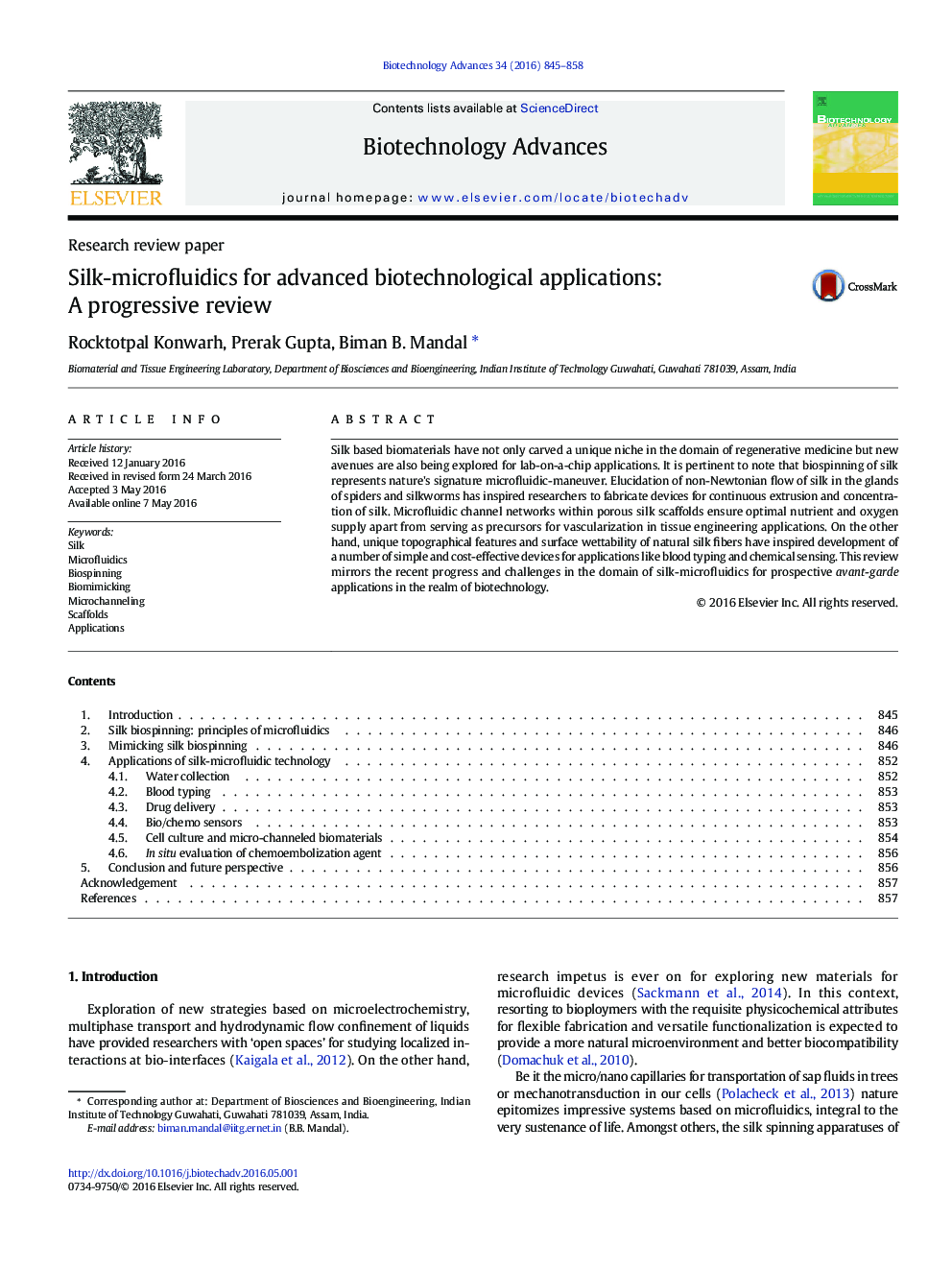| Article ID | Journal | Published Year | Pages | File Type |
|---|---|---|---|---|
| 6451225 | Biotechnology Advances | 2016 | 14 Pages |
â¢Biospinning of silk represents nature's hallmark microfluidic-maneuver.â¢Documentation of silk for microfluidics vis-à -vis microfluidics for silk.â¢Microchanneling in scaffolds is critical in tissue engineering applications.â¢Silk microfluidics applied for wide spectrum of biotechnological applications.
Silk based biomaterials have not only carved a unique niche in the domain of regenerative medicine but new avenues are also being explored for lab-on-a-chip applications. It is pertinent to note that biospinning of silk represents nature's signature microfluidic-maneuver. Elucidation of non-Newtonian flow of silk in the glands of spiders and silkworms has inspired researchers to fabricate devices for continuous extrusion and concentration of silk. Microfluidic channel networks within porous silk scaffolds ensure optimal nutrient and oxygen supply apart from serving as precursors for vascularization in tissue engineering applications. On the other hand, unique topographical features and surface wettability of natural silk fibers have inspired development of a number of simple and cost-effective devices for applications like blood typing and chemical sensing. This review mirrors the recent progress and challenges in the domain of silk-microfluidics for prospective avant-garde applications in the realm of biotechnology.
